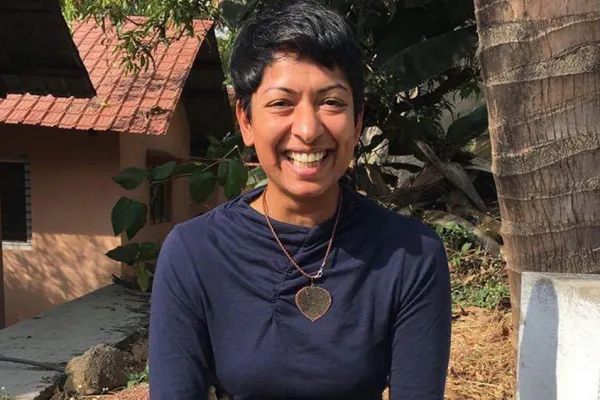Investing in Yourself
Alumnae News

Published January 31, 2018
When Nirupa Umapathy ’02 left India to study at Smith, she designed her double major in anthropology and economics with the intention of working in development for organizations that dealt with women’s empowerment.
But, she says, pragmatism won out. “I was fearful of not having my work-visa supported, and not having the financial resources to pay off student loans.”
Umapathy opted instead for a career in finance and headed to Wall Street right after graduation. After 14 years in the field, she left and took some time off in 2017 to examine her life and her goals. She says, “I stepped away from a very successful and lucrative career in finance, because I desired to live a more creative and autonomous life, one that will move me in the direction of impact and purpose.”
The catalyst for that decision was a book, Designing Your Life, by William Burnett and Dave Evans, a lifestyle approach based on the tenets of Design Thinking (focusing on the solution rather than the problem) created at Stanford University. She then joined a Life Design Community, where she gained further insight into the process.
Umapathy is sharing what she’s learned about life design with other alumnae via a webinar on February 14, “Life Design 360: Designing a Blueprint for Integrated Living,” which is free, but registration is required. Here she offers insight on living purposefully and where her own journey led her.
What was it like to walk away from a successful career in finance?
In the financial industry it is a known fact that stepping away, even for a year, drastically reduces your shelf life. I determined that I had built up my network, skills, and finances enough to take the biggest risk of all, which was to invest in myself. I was ready to create a blueprint for a well-lived and integrated life, not a canned model that existed for mass consumption.
What is one of the main things you’ve learned?
One of the biggest takeaways from my own journey and sabbatical and being connected with like-minded travelers, is that the “in-between” or “remaking” part of the journey is often lonely, mostly because of the lack of a support network.
What are some basic ideas of your take on life design?
If you were the author of your own life, what would your book read like? What would it feel like to put you at the center of your story? Think of yourself as the client and the designer. The life you are designing is uniquely built for you and your desires, dreams, talents, and resources.
What are some approaches you found valuable?
I embraced the spirit of experimentation. I allowed myself the space to start from scratch and to not always “succeed.”
Smith recently launched its own Design Thinking initiative. What can you tell students about the benefits of applying some of the tenets of Design Thinking to their own lives?
Through Design Thinking workshops, students will gain the confidence to think creatively and laterally and to embrace real-life experiential learning, and these are critical skills that we all need to survive and thrive in an age of rapid and exponential change.
Describe how you hope to change attitudes as you follow your path?
I suspect that the more stories we hear of people who follow their heart, their own truth, and their dreams, it will embolden more of us to create our own blueprints for a well-lived life. We hear very little about people in the process of redesigning their lives and venturing into unknown territory. While I lived and experienced a very traditional model of success for the past 14 years, I know the coming years will be a radical departure from the past.
Register for the webinar “Life Design 360: Designing a Blueprint for Integrated Living,” presented by Nirupa Umapathy ’02, February 14, 2018, noon to 1 p.m. Eastern time.